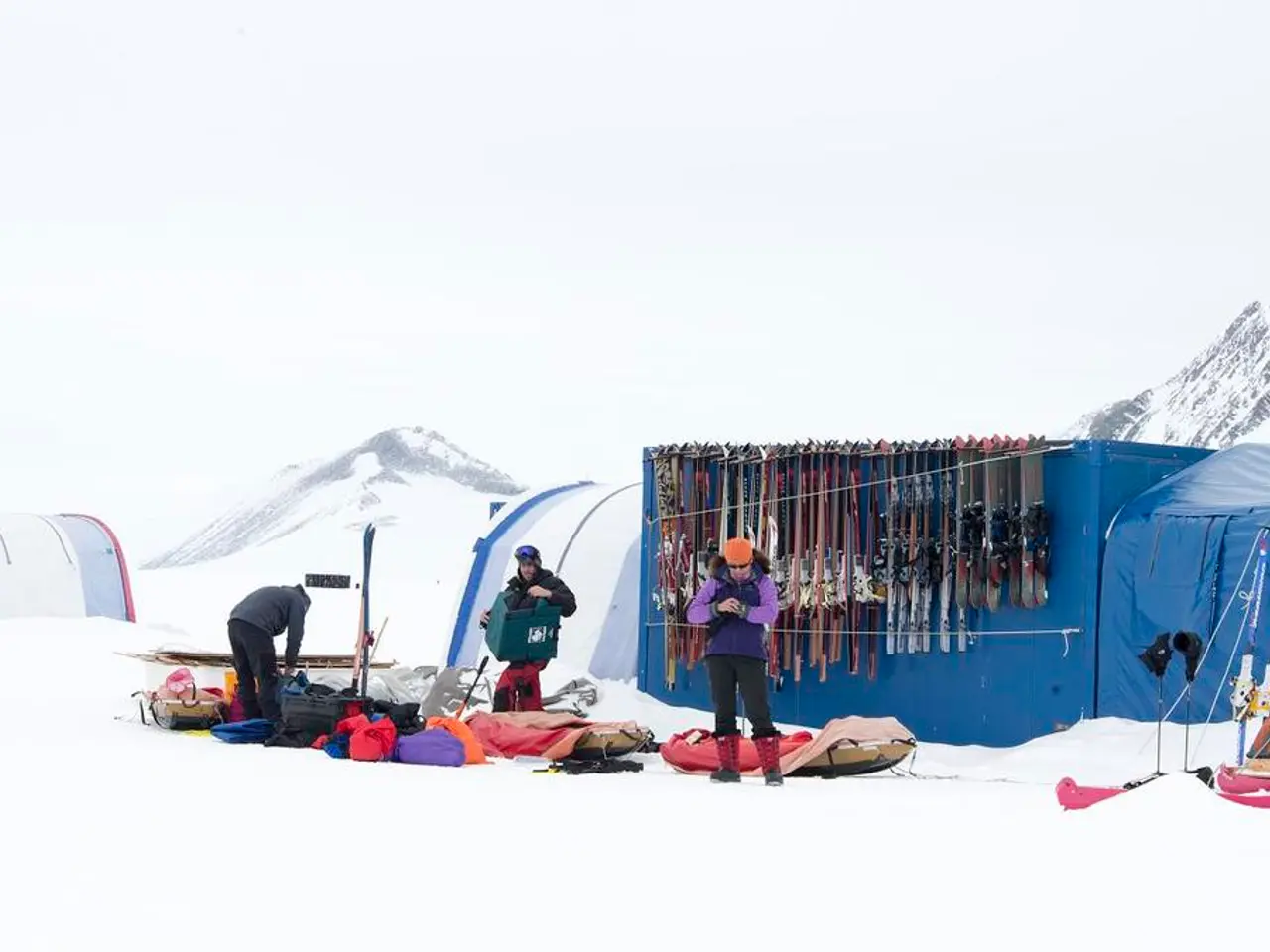Exploring Yosemite National Park's Treacherous Trails: A Comprehensive Guide
Hiking in Yosemite National Park offers a unique opportunity to both see and experience the park's breathtaking landscapes. However, it's essential to be well-prepared and aware of the potential hazards that come with exploring this natural wonder.
When venturing on popular but challenging trails like the Mist Trail, safety precautions are crucial. Staying hydrated and taking breaks as needed is vital to avoid exhaustion. Following all posted signage and warnings, which exist due to previous accidents, is also essential. Hikers should stay on established paths and avoid unnecessary risks, such as entering the water near waterfalls or jumping over guardrails.
Avoid distractions like taking selfies near edges where falls can be deadly and wear appropriate footwear, such as hiking boots or trail shoes with good traction, especially on slippery granite surfaces like those on Half Dome. Be prepared to turn back if conditions worsen, particularly in wet or inclement weather that can make trails hazardous.
For overall hiking and camping preparation in Yosemite and similar environments, visitors should pack weather-appropriate layered clothing, rain gear, sturdy hiking boots, sun protection (hat, sunglasses, sunscreen), insect repellent, and a first-aid kit. Bring navigation tools (maps, compass, GPS), emergency whistle, and enough water and food supplies. Check weather forecasts and park alerts before your trip, and share your hiking plan with someone else.
Regarding precautions against tick-borne diseases, hikers should use insect repellent containing DEET or permethrin on clothing. Wearing long sleeves and pants tucked into socks to minimize skin exposure is also advisable. Perform thorough tick checks on yourself and your gear after hiking through brushy or grassy areas. Shower soon after outdoor activities to wash off unattached ticks. If you find a tick, remove it promptly and properly with fine-tipped tweezers. Be aware of symptoms of tick-borne illnesses (e.g., fever, rash, fatigue) and seek medical attention if they occur.
For protection against high winds, choose campsites and resting spots sheltered from wind. Use sturdy tents and secure all gear tightly. Wear layers to prevent hypothermia from wind chill. Avoid exposed ridges or cliff edges during strong winds. If caught in severe wind conditions, seek lower elevation or sheltered areas and wait until conditions improve before continuing.
Visitors can enjoy a variety of educational and interesting attractions in Yosemite National Park. Shuttle Bus Stop #16 leads to Happy Isles and the Nature Center, where the Valley Junior Ranger program operates during summer months. The Nature Center offers many educational exhibits, and the trail A Changing Yosemite begins near shuttle bus stop #6.
The Pioneer Yosemite History Center offers a self-guided tour through historic buildings and exhibits, located adjacent to the Wawona General Store, across the Covered Bridge. The Miwok in Yosemite introduces Southern Miwok life, history, and language, with the trail beginning behind the Yosemite Museum building. This short loop trail winds through a reconstructed Miwok-Paiute Village in the Indian Village of Ahwahnee.
Remember, hiking in Yosemite National Park requires treating river, stream, lake, or spring water, and packing out what you pack in is a rule for hiking in the park. Trails in Yosemite National Park are not maintained nor regularly patrolled, so it's essential to be self-sufficient and well-prepared.
Mono Winds can create potential danger from falling trees and may lead to area closures or evacuations. Therefore, it's crucial to check park alerts before your trip and stay informed about weather conditions. By following these guidelines, visitors can enjoy hiking Yosemite with increased safety and preparedness against environmental hazards such as ticks and strong winds.
- The Mist Trail in Yosemite National Park, while offering stunning views, demands vigilant safety precautions to navigate its challenging terrain.
- Staying hydrated and taking breaks as necessary prevents exhaustion when hiking the trails in Yosemite, thus ensuring a safe and enjoyable experience.
- Adhering to posted signage and warnings in Yosemite National Park is crucial, as these precautions exist due to past incidents and potential hazards.
- Hikers in Yosemite should stay on marked paths and avoid risky behaviors, such as entering water near waterfalls or jumping over guardrails.
- Proper footwear, like hiking boots or trail shoes with good traction, is essential when traversing slippery surfaces in the park.
- In wet or inclement weather, hikers should be prepared to turn back to prevent the trails from becoming hazardous.
- A comprehensive preparedness guide for hiking and camping in Yosemite includes essential items like weather-appropriate clothing, rain gear, sturdy hiking boots, sun protection, insect repellent, first-aid kit, navigation tools, emergency supplies, and a plan shared with someone else.
- To protect against tick-borne diseases, hikers should use insect repellent with DEET or permethrin and wear long sleeves and pants tucked into socks.
- Visitors to Yosemite National Park should be mindful of potential dangers like high winds, fallen trees, and area closures or evacuations due to Mono Winds, and stay informed about weather conditions through park alerts.



